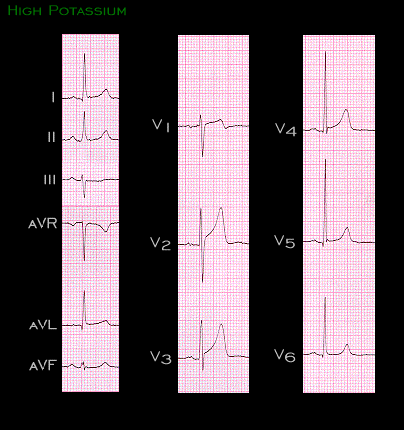
The electrocardiogram is uniquely sensitive to changes in extracellular potassium and calcium. The electrocardiogram on this and on the next several pages demonstrates the effects of an increase in extracellular potassium. Shown here is the ECG from an 82 year old male whose serum potassium concentration was 4.2 mM. The ECG is normal with the possible exception of the R wave which measures 2.5mV (29mm) in lead V5. This R wave amplitude is above normal limits and suggests the possibility of left ventricular hypertrophy,
